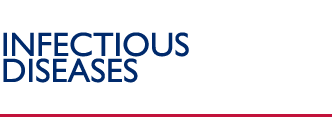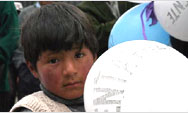Key Achievements in Tuberculosis: Fiscal Year (FY) 2008
USAID support improves global TB picture. In FY
2007, USAID supported expanded and strengthened
DOTS programming and other components of the
STOP TB Strategy in 41 countries. This support included
training for nearly 16,000 health personnel and community
volunteers and leveraging of USAID resources with
the Global Fund to Fight AIDS, Tuberculosis and
Malaria to gain additional resources for country-level TB
activities. In USAID-assisted countries, the TB case
detection rate (CDR) increased from 49 percent in 2003
to 59 percent in 2006, while the already high treatment
success rate (TSR) remained close to 80 percent (figure
3). These important results contributed significantly to
the global CDR improvement from 45 to 61 percent
between 2003 and 2006 and a global TSR approaching
the target rate of 85 percent in 2005. Ten USAID-assisted
countries met or surpassed the case detection target of
70 percent in 2006; six more with CDRs of 65 percent
or greater are approaching it; and 12 have surpassed the
85 percent TSR target.
Brazil increases DOTS coverage and doubles case
detection. Before USAID support began in 2002,
DOTS coverage in Brazil was just 25 percent. USAID-supported
technical assistance and policy dialogue were
instrumental in gaining Brazil’s official endorsement of
DOTS. As a result, DOTS coverage has increased to
80 percent, and the national CDR increased from
30 percent in 2002 to 64 percent in 2006.
Afghanistan cuts TB disease, deaths by more than
half since 1990. Despite instability and insecurity,
Afghanistan has surpassed its targets of reducing TB
prevalence and deaths to below half of their 1990 levels.
More than 800 health facilities (81 percent nationwide)
provide DOTS, resulting in 97 percent coverage and a
CDR of 66 percent in 2006, just shy of the 70 percent
target, and a 90 percent TSR for new cases in 2005. The
laboratory network has also expanded and decentralized
to encompass approximately 435 microscopy centers.
Smiling Sun clinics serve millions in Bangladesh
cities. USAID has supported DOTS in urban areas of
Bangladesh since 2002, assisting NGOs that belong to
the Smiling Sun network. With 56 clinics and 31
microscopy centers, the network serves 3.8 million people
in four cities. Before the Smiling Sun initiative,
DOTS services in these areas were very limited. In 2007,
Smiling Sun clinics detected 4,570 TB cases, achieved a
TSR of 89 percent, and helped increase the national
CDR to 71 percent from 30 percent in 2002.
Russia accelerates actions against MDR-TB. USAID
supported pilot projects to treat MDR-TB in five
regions. These projects will serve as models for scale-ups
funded by the Global Fund in other regions. In Orel,
USAID provided financing and assistance to establish
the Orel Center of Excellence for MDR-TB, which
opened in August. The Center will implement 20 training
courses to reach 300 technical personnel involved in
MDR-TB activities. To slow the emergence of drug
resistance, USAID also supported DOTS expansion in
15 regions and republics. As a result, the TSR in
Vladimir rose from 64 to 80 percent while remaining
high in Orel at 90 percent – rates considerably higher
than the national TSR of 58 percent.
Tanzania scales up TB-HIV services. USAID assisted
the scale-up of TB-HIV services, including HIV testing
of TB patients, the entry point to treatment and care for
those found HIV positive. USAID expanded its assistance
from 10 to 18 districts and supported training for 301
providers, including 97 from the private sector. As a
result, 13,996 TB patients were offered HIV counseling
and testing, with 9,416 (67.1 percent) accepting and
receiving test results. In target districts, 140 outlets,
including 50 in the private sector, were providing
TB-HIV services.
Related Links
|


